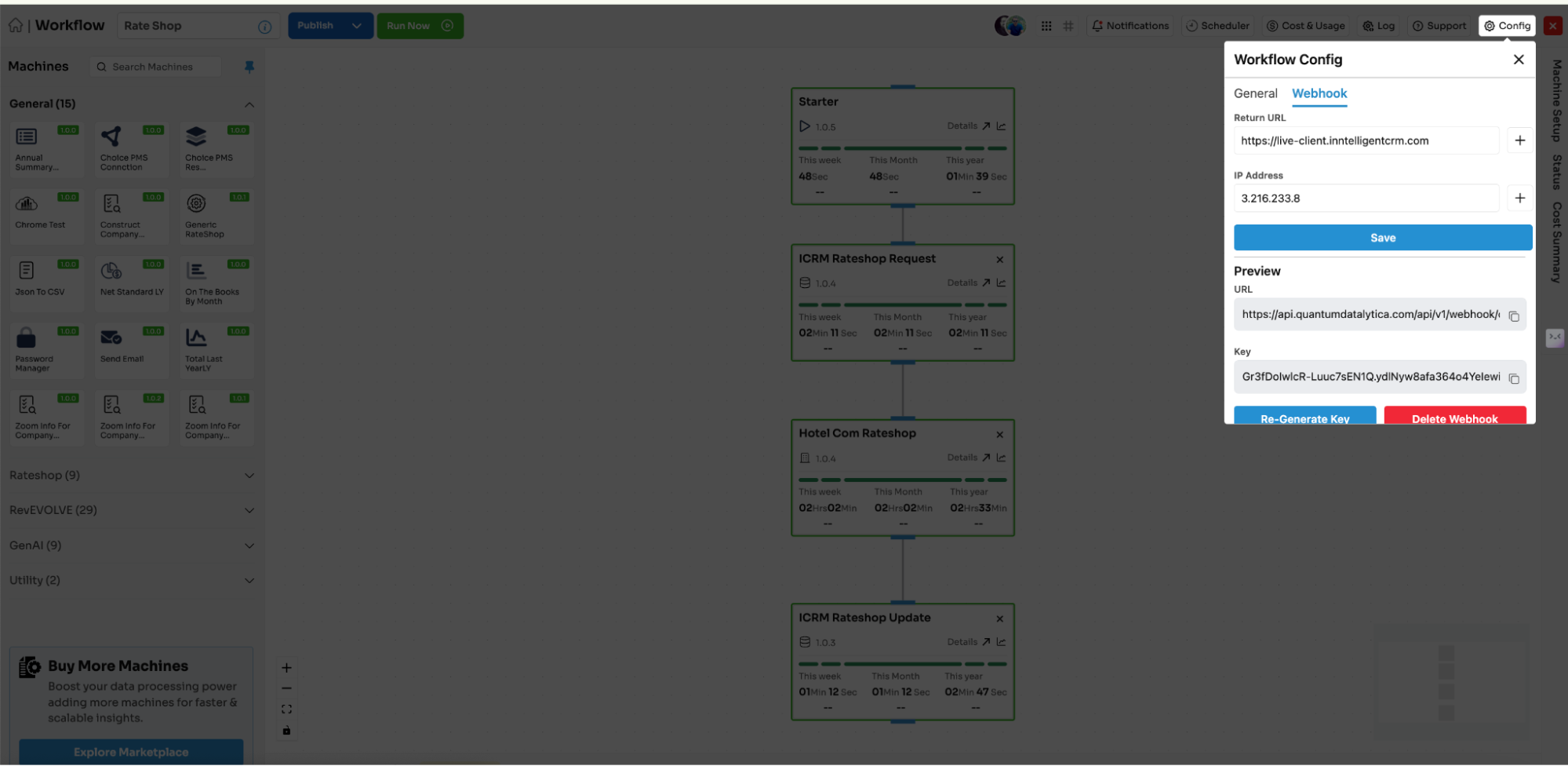Triggering QuantumDataLytica Workflows from External Systems: A Webhook Approach

Table of Contents
In modern data-driven ecosystems, the ability to trigger workflows on demand is crucial for real-time analytics and responsive automation. While QuantumDataLytica already offers a no-code environment to design complex data pipelines, many organizations need these pipelines to start from external triggers—such as incoming events, web forms, or system alerts. In this blog, we’ll dive into webhooks, explore how they facilitate external workflow triggering, and demonstrate QuantumDataLytica’s new Webhook Mechanism that allows you to initiate workflows outside our platform.
What Is a Webhook Mechanism?

A webhook is essentially a user-defined HTTP callback that enables one application to send real-time data or trigger events in another application automatically. Unlike traditional polling methods, where an application repeatedly checks another system for new data, webhooks push information as soon as it’s available. This push-based model conserves resources and ensures near-instant event processing.
Where Webhooks Are Used
- Payment Processing: Payment gateways like Stripe or PayPal send real-time transaction updates to merchants’ systems (external link).
- CI/CD Pipelines: DevOps tools (e.g., GitHub Actions ) send commit or pull-request events to automated build workflows.
- CRM & Marketing: A marketing platform triggers a follow-up workflow whenever a new lead is added in your CRM.
Webhooks are especially handy when real-time responses are essential. Instead of manual or scheduled checks, the data automatically pushes to your system for immediate processing.
Steps to Set Up Webhooks in Data Factory

1. Access Webhook Settings
In the Data Factory module, locate the Configuration icon on the top right corner of your workflow design page. Clicking it opens a settings panel specific to this workflow.
2. Add Return URL and IP Address
Under Webhook Settings, specify one or more Return URLs (where you want us to send the status or response) and valid IP addresses authorized to trigger the workflow.
For more details, see our Data Factory documentation
3. Generate API Key
After saving your Return URL and IP addresses, Generate the Key. The system provides a unique API Key that external systems must use to trigger this particular workflow. Ensure you store this key securely.
4. Trigger the Workflow from Outside
Using your newly generated key, any external system can send an HTTP POST request to the endpoint specified in your QuantumDataLytica settings. The request includes the key and any required parameters. Once received, QuantumDataLytica initiates your no-code data pipeline immediately.
If you’re new to no-code automation, check out our Introduction to Workflows for an overview of designing pipelines.
Example Implementation

Consider a scenario where your CRM platform needs to process lead data in real-time. Using the QuantumDataLytica Webhook:
- Event Trigger: A new lead form is submitted in your CRM.
- POST Request: CRM system sends an HTTP POST to the QuantumDataLytica webhook endpoint, including the API Key and lead data.
- Workflow Execution: QuantumDataLytica automatically runs your designated data pipeline to clean, enrich, and store lead data in your analytics warehouse.
- Response Handling: A success/fail message is optionally sent to the Return URL, allowing your CRM to confirm the pipeline completion.
Key Benefits of Webhook Integration

- Real-Time Processing: Immediately respond to external events, reducing latency and improving operational efficiency.
- Reduced Overhead: No need for endless polling; the push-based mechanism minimizes resource usage.
- Scalable: Handle growing volumes of requests as your business expands, thanks to our cloud-native architecture.
- Security: Only IP addresses and systems you trust can trigger the workflow, ensuring controlled execution
Conclusion: Elevate Your Automation with Webhooks
QuantumDataLytica’s new Webhook Mechanism bridges the gap between external systems and your data pipelines. Instead of manually initiating workflows or relying on scheduled runs, you can now seamlessly integrate events from outside the platform to spark real-time data processing. It’s a significant leap forward for businesses seeking more responsive, data-driven solutions.
FAQs
A webhook in QuantumDataLytica allows external systems to trigger a workflow automatically by sending an HTTP request, eliminating the need for manual or scheduled runs.
We use API Keys, Return URL whitelisting, and IP restrictions to ensure that only authorized sources can initiate workflows, providing an additional layer of security.
Each workflow has its own unique API Key and settings. If you need multiple workflows triggered externally, you’d configure each separately.
The no-code environment of QuantumDataLytica remains intact. Simply generate the key, configure the Return URL and IP addresses, and your external system just needs to send a POST request with the valid credentials.
Companies use webhooks for real-time lead processing, IoT event handling, payment confirmation workflows, and any scenario that demands immediate data processing after an external trigger.
Recent Blogs
-
Data Management Innovations 01 Oct, 2025
Data Engineering & Data Quality: A Comprehensive Guide for Data Engineers
-
Efficient Data Management Solutions 25 Sep, 2025
How to Build an Efficient Data Engineering Pipeline
-
Efficient Data Management Solutions 23 Sep, 2025
Step-by-Step: Cleaning, Structuring & Dispatching Raw Data Using QuantumDataLytica
-
Workflow Automation 22 Aug, 2025
How to Upload Your Machine on QuantumDatalytica – A Complete Guide
-
Workflow Automation 27 May, 2025
How to Build a Sentiment Analysis Pipeline for Google Reviews in Minutes
